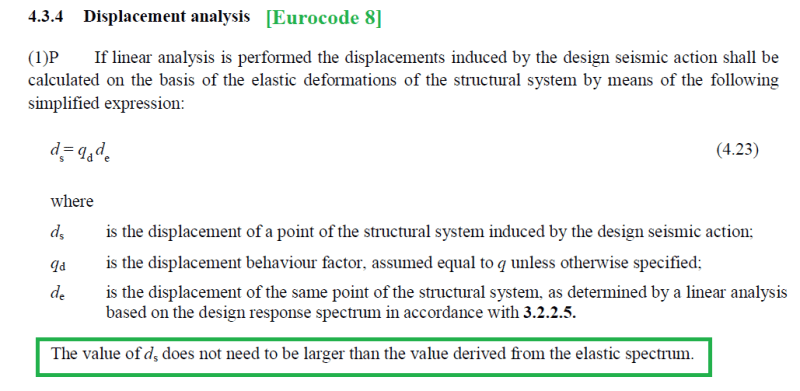The displacement for both damage limitation verification and in order to classify the system as non-sway,sway or unstable as per eurocode 8, if linear elastic analysis is used it should be multiplied by behavior factor(q)in order to get the value ds(see attached picture). section 4.3.4 of Eurocode 8 states that this value ( ds=dr*q) "need not be larger than the value derived from elastic spectrum". my question is the value derived from elastic spectrum( or say if the value of q=1 for design spectrum)is very small and when used it used it usually yields "non-sway" for frame classification,which would be unstable if ds=q*dr is used. anyone with experience with eurocode please help me verify if using elastic response spectrum to calculate displacement( which would be compared with the result from design spectrum multiplied by q) is a safe and acceptable approach even if the code clearly states it.


